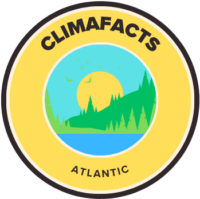Author: Jake Breen
Interviewee: Anna Weinstein, Marketing and Communications Lead,
Nova Scotia Nature Trust
Date: June 3, 2025
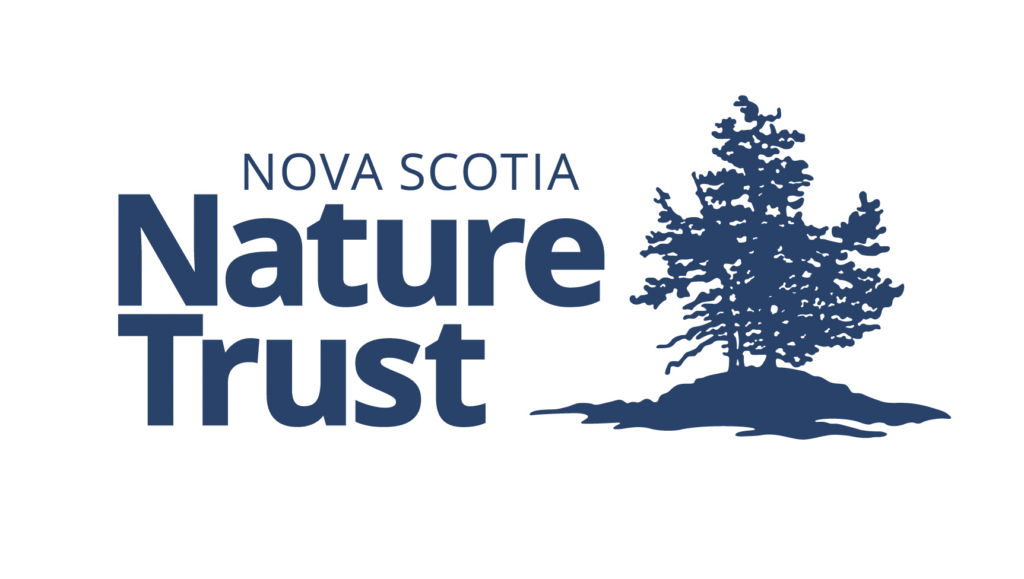
Area of Impact:
Atlantic Canada (Nova Scotia)
Organization Information:
INTRODUCTION
Biodiversity is a term that describes the variety of all life on Earth – from individual plants and animals all the way to entire ecosystems (communities of life interacting with their physical environment). Biodiversity is essential as it forms the web of life, which contributes to our access to food, water, medicine, and a stable climate. Nature and biodiversity are in a crisis – many species are facing extinction, ecosystems are being destroyed, and wetlands are disappearing – largely due to a combination of human-influenced climate change and industrial practices, such as deforestation. The land on Earth and the ocean act as natural carbon sinks, meaning they absorb large amounts of emissions and help to offset the impacts of climate change. The conservation of nature and biodiversity is vital in our response to climate change.
Nova Scotia Nature Trust is a non-profit organization that aims to help preserve some of Nova Scotia’s natural areas such as old growth forests. Their work is guided by research and science-based conservation planning to identify and prioritize sites for protection. They also provide outreach and education that aims to engage Nova Scotians in conservation action.
INTERVIEW
We recently spoke with Anna Weinstein, a representative from the Nova Scotia Nature Trust, about the importance and impact of their work.
Can you share an overview of the mission and operations of the Nova Scotia Nature Trust; where did the inspiration for your project begin?
In 1994, a group of concerned citizens came together to address growing threats to our unique natural heritage. They shared a vision of preserving the wild spaces and native species of our province and recognized that a unique approach would be needed, as so much land was privately owned.
Across Canada, the government owns almost 90% of all land. In Nova Scotia the situation is reversed. Over 65% of land is in private ownership, including 85% of the coastline. This is the highest rate of private ownership in the country after PEI. This meant that working with private landowners would be critical to any provincial conservation effort.
This visionary group created the Nature Trust to meet this need.
The Nova Scotia Nature Trust was created to protect and conserve our province’s incredible natural legacy. We work directly to save outstanding natural areas, through land conservation. We use a strategic, science-driven approach to identify and protect the most threatened, unique, and significant natural areas. Together with landowners, local communities, other conservation organizations and government we protect and steward wild places. We protect land in perpetuity, for nature and future generations to enjoy.
How does the Nature Trust help Atlantic Canadians as climate change progresses?
Saving the intact, healthy nature we still have is one of the most important and most effective ways not only to combat climate change itself but also to mitigate the effects that are already affecting Atlantic Canadians. Across Nova Scotia, ecosystems like old forest and wetland complexes act as powerful carbon sinks; protecting them ensures that the vast amount of carbon they store stays where it is. Those same landscapes also provide what are called “ecological services,” like giving us clean air and clean water, and creating buffer zones that reduce the effects of climate change impacts like increased flooding, coastal erosion, and even sea level rise. It’s so much easier – not to mention cheaper! – to protect nature where it is already fulfilling these functions than to restore damaged landscapes or try to recreate these ecosystem services through other means.
Those functions obviously affect human well-being, but there are so many other ways that protecting nature benefits all of us. For example, the mental health benefits of being in nature are well documented at this point, to the extent that some health providers have even signed on to a program to actually prescribe nature to their patients. While almost all Nature Trust-protected land is open to the public, the lands we call “urban wildlands” give Nova Scotians living in urban centres easy access to these benefits.
We also know that nature is one of the things that Nova Scotians love about living here – it’s a big part of the pride we feel for our home. If we don’t protect it, that Nova Scotia we love will disappear.
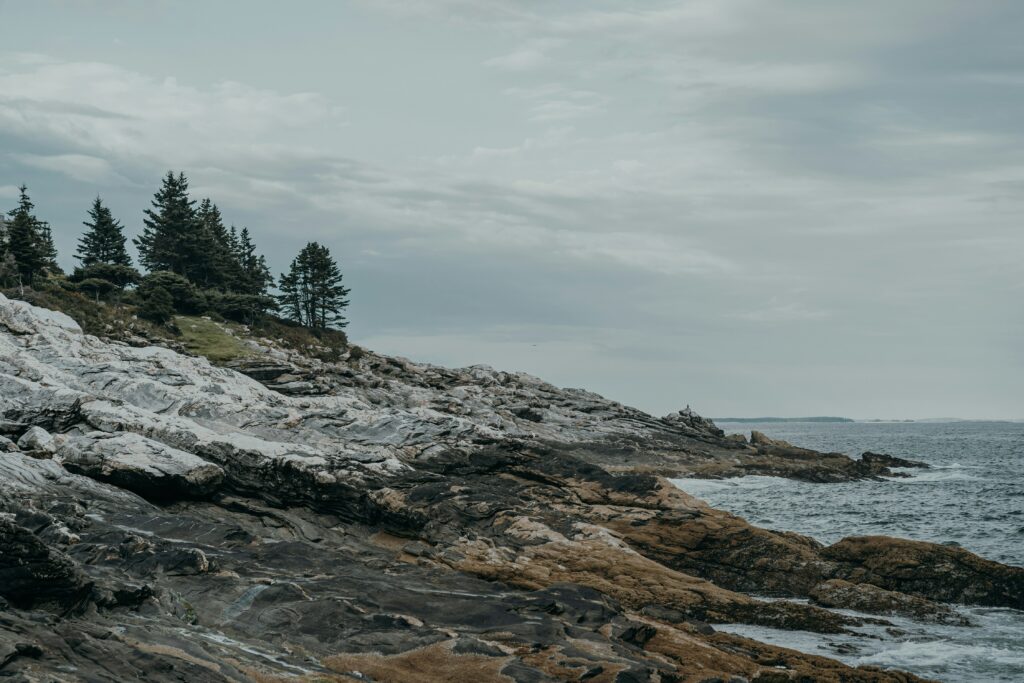
What educational projects are currently ongoing? What approach does your organization take toward climate education?
Our outreach aims to help people understand more about the nature we have here in Nova Scotia, and get them motivated to help protect it. We host events, like guided hikes and citizen science projects, on our lands; bringing people out onto protected land and letting them experience it for themselves is the best way to strengthen their connection to it. Of course, that’s not always possible, and we want to make sure there are lots of other ways for people to connect; for example, we host webinars about conservation-related topics, and we partner with other organizations to help connect our work with the work they are doing in communities or in related environmental projects.
We also do direct outreach work with landowners in areas identified as biodiversity conservation priorities. Since so much of Nova Scotia is in private ownership – more than 65%, a much higher percentage than in other parts of Canada – and since these private lands are disproportionately ecologically diverse and significant, landowners play an especially big role in conservation here. Many of them are already deeply committed to protecting their land, and we try to help give them the knowledge and tools to be able to do it – not only about conservation options but more broadly about their land’s ecology and its significance in the bigger picture of nature in Nova Scotia.
Can you explain a little bit about how you incorporate scientific research into your efforts to preserve natural areas in Nova Scotia?
Our land securement is based on a long-term strategic conservation plan and ongoing ecological assessment, data-driven conservation planning and prioritization based on evolving conservation data, to identify the highest priority lands for protection, and to ensure that our limited resources are used most effectively to save nature. We work collaboratively with the larger conservation community, scientists, government agencies, and community members to assess science-based conservation priorities, to assess how to best work together to advance conservation, and where each partner can best contribute.
Within our selected geographic focus areas, we protect land that promotes and preserves:
- Rare and unique species and habitats – We target lands that harbour rare and unique species and their associated habitats. With the rapid loss of species around the world and escalating threats to the natural conditions they need to survive, it is critical to protect their remaining refuges before they are lost forever.
- Ecological Integrity – We work to protect land that contains intact ecological systems.
- Biodiversity – We protect areas that are important for provincial biodiversity, including rare species, rich or diverse ecosystems and species, and/or important congregations of species.
- Connectivity – We prioritize opportunities to complement areas already protected or pending protection by the Nature Trust, the province, or other conservation partners. This helps preserve intact ecosystems, extend wildlife corridors, and make stewardship efforts more efficient.
- Climate Change Resiliency – We prioritize areas and ecosystems that are relatively resilient to climate change (for example, not likely to be lost in the immediate future to sea-level rise), or that facilitate resiliency of ecosystems and species.
- Nature-based Solutions – We look for opportunities where land conservation can help mitigate socio-environmental challenges, such as climate change, pollution, water security, and human health and well-being.
- Representivity – We consider the degree to which natural landscapes and ecosystem types are represented in the current and pending provincial protected areas system, and we prioritize those that are currently underrepresented.
Together, these foundational elements drive our six Conservation Priorities: [1] endangered species; [2] coasts and islands; [3] freshwater ecosystems; [4] important bird habitats; [5] old, rare, and unique forests; and [6] urban wildlands. These six Conservation Priorities bring together the scientific imperatives in meaningful groupings that help bring our mission and impact to life.
The Nature Trust has been and continues to be a part of collaborative prioritisation and biodiversity target planning with our conservation partners here in Nova Scotia. This includes participating in the collaborative multi-year Challenge Fund/Canada-Nova Scotia Nature Agreement project, with all levels of government, Mi’kmaw and community conservation organizations; Kespukwitk Conservation Collaboration; the Atlantic Archipelago partnership, Coastal Island Prioritization initiative and partnerships with national and regional land trusts in Atlantic Canada. We are part of a new collaborative conservation planning process for Nova Scotia and also working on updating our own Conservation Plan and Framework for the next 5-year planning cycle, including using new spatial tools to complement our prioritization work.
What specific conservation projects have you worked on in Nova Scotia? Is there a specific area or conservation project that you are specially connected to or have had a significant impact on?
The Nature Trust has been around for thirty years, so we have a lot of conservation projects at this point! Right now, the network of conservation lands in our care includes more than 190 separate sites covering tens of thousands of acres. We like to think that we’ve had a significant impact on conservation in Nova Scotia in a lot of different ways. For example, our partnership with the Town of Wolfville to protect the Wolfville Watershed Nature Reserve was the first conservation easement in Canada between a community land trust and a municipality, pioneering a new tool for conserving municipal lands across Canada; similarly, our partnership with Acadia University to protect Bon Portage Island was the first conservation easement in Canada between a land trust and a university, again opening new doors for conservation with major academic/educational organizations.
We’re proud of all of the lands we’ve saved, no matter the size, but there are a few parts of the province that are especially close to our hearts. The islands off the Eastern Shore [form] the largest coastal wilderness in Nova Scotia, with unique natural features like coastal rainforests largely undisturbed since the last ice age. Opportunities to protect a coastal island wilderness of this scale and significance are increasingly rare across the planet; these had been unsuccessfully proposed both as a national park and a provincial park when we stepped in [during] 2014. We set a goal to protect the entire archipelago and called it the 100 Wild Islands campaign (although it’s actually over 280 islands!). We set our sights on saving the 3,000 acres in private ownership, and we also inspired the Province of Nova Scotia to designate the 4,000 acres of government-owned islands as Wilderness Area; at this point, over 85% (and counting!) of the archipelago is now protected. The 100 Wild Islands are now very much in the mainstream, and we’re so heartened that Nova Scotians recognize and care about these incredibly precious and rare islands.
The Mabou Highlands project is also a big highlight. It’s the largest assemblage in our 30-year history – we protect over 3,500 acres, and together with lands protected by the Province (the Cape Mabou Wilderness Area) and the Nature Conservancy of Canada, the Mabou Highlands now covers more than 7,500 acres of protected coastal wilderness.
Can we mention one more? The St. Mary’s River. It’s such an iconic, beloved river, and it is a wonderful example of partnership. We’ve been working along the river since 2006, and together with the lands protected by the Province, over 11,000 acres of outstanding freshwater and forest wilderness and 54 kilometres of ecologically-rich shoreline on the St. Mary’s River are now protected. And we are honoured to work with community partners like the St. Mary’s River Association and many others, who are passionate about the health of the river.
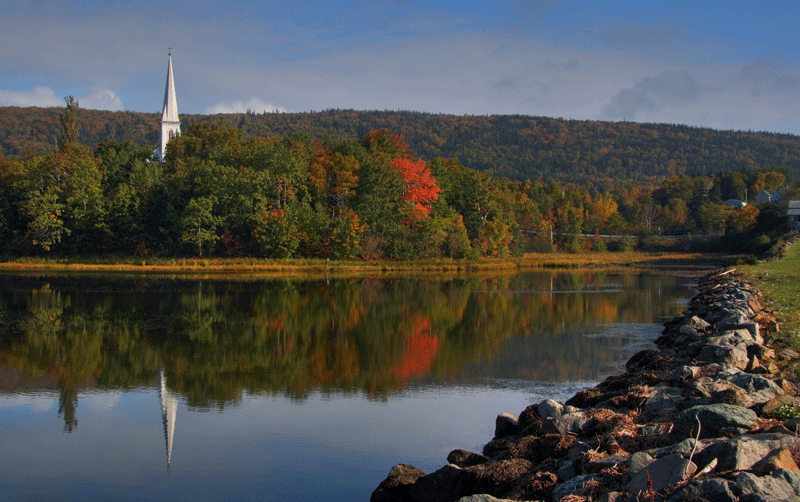
As an organization aiming to help preserve natural areas in Nova Scotia, your team likely has a firsthand view at the impacts of climate change. Please share what you have noticed about how climate change is impacting natural preservation and conservation efforts.
Sea level rise is something that we have to take into consideration when we’re looking at protecting the coastline or coastal islands. We see it primarily in the erosion of the coastline itself, the banks and beaches wearing down or predicted to be underwater in the future. That has a big effect on the species who need that habitat, for example Piping Plovers – there is less and less of their specific beach habitat available to them. For us, that makes it even more important to conserve the places where that habitat is still intact, or to use the best data available to anticipate where potential refugia may be in the future for species like this.
We also see other effects from the increase of extreme weather events – a lot more blowdown from hurricanes, coastal erosion in general, and ecosystem impacts from wildfires. Not to mention the effects on our staff getting out to take care of our lands – we can’t monitor or do on-the-ground stewardship work if the roads are washed out from a flood, for example.
We are also seeing how some species are exhibiting significant changes to their range. Our winters are now noticeably warmer, with much less snow and far fewer very cold periods. That means that pests [including] ticks and invasive insects like Hemlock Woolly Adelgid can now survive our winters, making them a year-round problem.
On the flip side, we’re seeing expanded ranges for species seeking new refuges. We recently protected Barren Island, off the eastern shore, for example; our bird survey there showed that it is already a refuge for some birds more commonly associated with boreal forests (including our Wabanaki-Acadian forest, which is a unique mix of the northern hardwood forest and the boreal forest ecosystems). As climate change forces mainland birds to seek refuge on the cooler, damper microclimates of the islands, this “escape route” function will increase in importance – check out this Audubon resource about the projected impacts of rising temperatures on 389 North American bird species at risk of extinction.
Do you have any advice for Atlantic Canadians as climate change progresses?
In terms of advice: climate change can feel really overwhelming, because it is. It’s easy to feel like our individual potential to help is very low. But everything we do really matters. Every acre of nature that we conserve today is an acre of land that is sequestering carbon, that is providing habitat for wildlife, that is helping clean our air and filter our water. Those effects are real, and they matter – and they add up.
And also – being out in nature is a great way to recharge when you are feeling the heaviness (or when you’re feeling great!). If you need inspiration on where to go, you can always explore our map of Nature Trust protected lands.
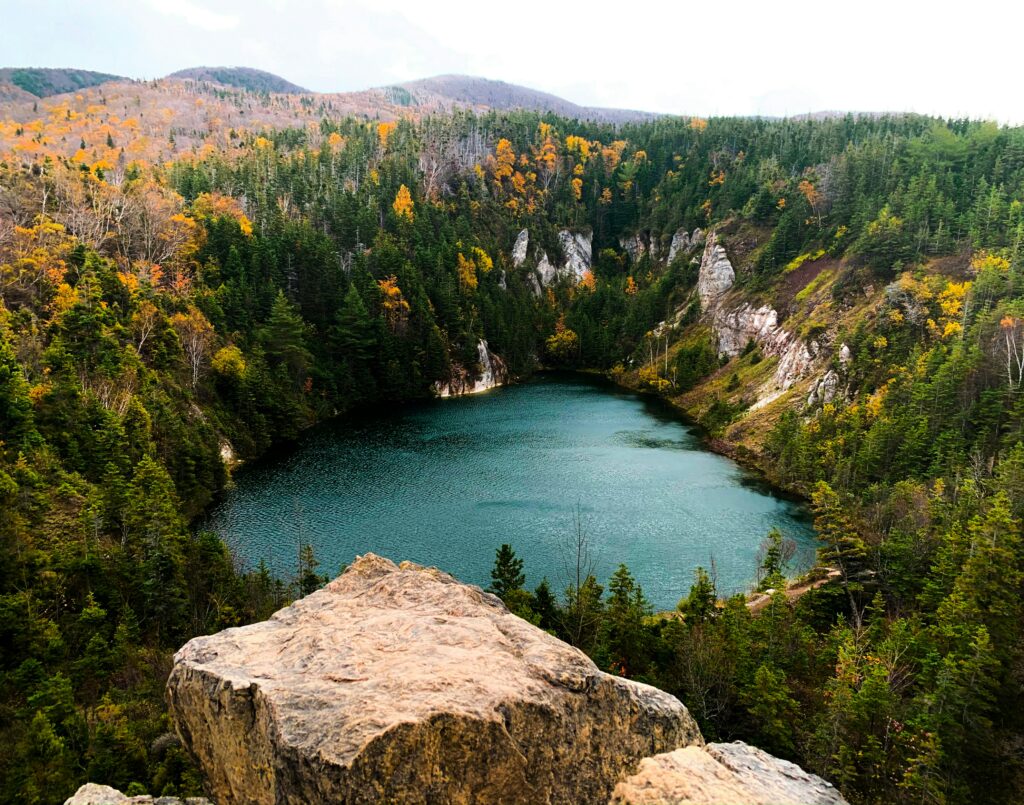
RESOURCES
The Province’s sea level rise map is a useful tool to help track the real time changes in our coastline and their projections for future impacts.
The Nova Scotia Invasive Species Council has great information and expert advice about the invasive species present in Nova Scotia and what we can all do to help reduce their spread.
CONCLUSION
The Nova Scotia Nature Trust is playing an important role in mitigating climate change through their conservation efforts. Not only are they positively impacting emission sequestering in Atlantic Canada, but they are also protecting many important species and indirectly providing mental health benefits for Nova Scotians. Their education initiatives are contributing to increased climate education and awareness for Atlantic Canadians in an accessible manner, which is essential in our society today.
The ClimaFacts Outreach Project was developed to highlight the important environmental work happening around Atlantic Canada. By participating in this project, our team will strive to share your group / project / initiative with our platform, bringing attention to the specific and local connections to climate change in Atlantic Canada. Please reach out to climafacts.outreach@gmail.com if you are interested in being featured.
